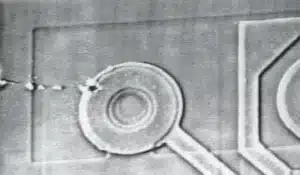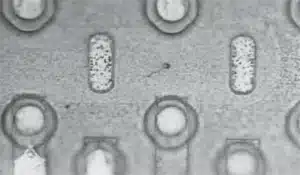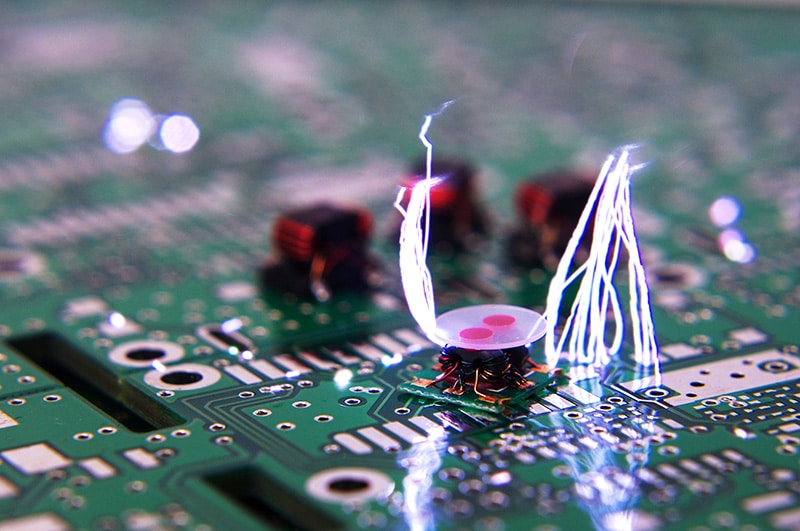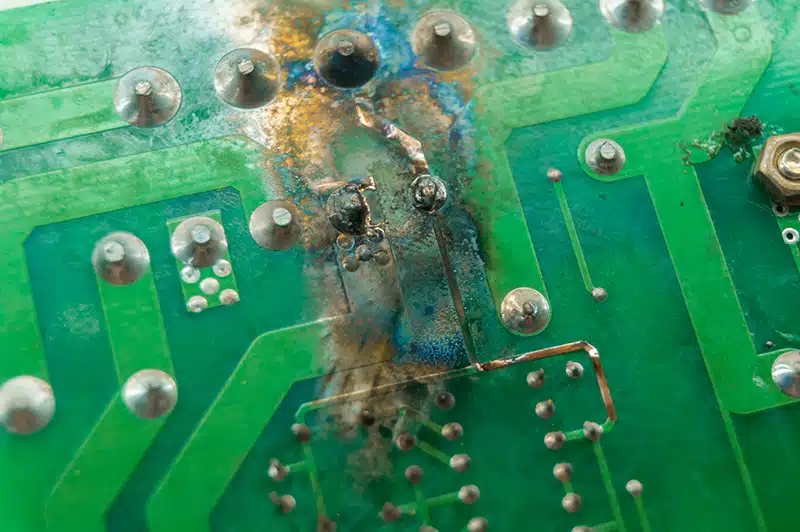Static electricity has been an industrial issue for centuries. Within today’s electronics industry, electrostatic discharge (ESD) impacts productivity and reliability in nearly every aspect of today’s electronics environment. It is widely accepted that ESD events are a significant cause of device failure and that implementing static control measures is not only desirable but essential. In this article, we will identify the types of ESD device damage, what causes electronic devices to fail and discuss the costly effects of ESD.
ESD problems have magnified during the past three decades because of two reasons:
ESD can change the characteristics of a semi-conductor device, degrading or destroying it. Controlled ESD begins with understanding how electrostatic discharge occurs in the first place. Electrostatic charge is commonly created by the contact or separation of two materials. This is known as triboelectric charging’, it involves the transfer of electrons between materials. If you are new to ESD Control, we recommend reading our article on everything you need to know about ESD to best help you protect your static sensitive electronic devices. So how do electronic devices fail? Read on to find out.
Electrostatic damage to electronic devices can occur at any point from manufacture to field service. Damage results from handling the electronic devices in uncontrolled surroundings or when poor ESD control practices are used. Some devices can be damaged or destroyed by as little as 10 volts. Generally, damaged is classified as either a catastrophic failure or a latent defect.
When an electronic device is exposed to an ESD event it may have caused a metal melt, junction failure or oxide failure. Such failure can usually be detected when the device is tested before shipping. If the ESD event occurs after the test, the damage will go undetected until the device fails in operation.
The term ‘latent defect refers to a malfunction that occurs following a period of normal operation. A latent defect, otherwise known as ‘latent failure’ or ‘latent damage’, is much more difficult to identify. A device may be partially degraded yet continue to perform its intended function for the next week, month, even year. However, the operating life of the device may be reduced dramatically. This could cause premature system failure which could prove extremely hazardous and very costly. Latent defects are challenging to prove or detect using current technology, especially after the device is assembled into a finished product.
| Image 1: Catastrophic Failure.
Total failure of a circuit. |
Image 2: Circuit Damage.
|
Image 3: Short Circuit.
Malfunction in circuit. |
|---|---|---|
 |
 |
 |
ESD damage is usually caused by one of three events: direct ESD to the device, ESD from the device, or field-induced discharges. Whether or not damage occurs to an ESD susceptible item (ESDS) by an ESD event is determined by the device’s ability to dissipate the energy of the discharge or withstand the voltage levels involved. The level at which a device fails is known as the device’s ESD sensitivity or ESD susceptibility.
A catastrophic failure of an electronic device can be the least costly type of ESD damage as it may be identified and repaired at an early manufacturing stage. However, latent damage caused by ESD is potentially costlier since the damage cannot be felt, seen, or detected through normal inspection procedures. Latent defects can be very expensive as the product passes all inspection steps and the product is completed and shipped to the customer. Latent defects can severely impact the reputation of a company’s product. Intermittent failures after shipping a product can be frustrating, particularly when the customer returns a product, reporting a problem which the factory again fails to detect.
The worse case scenario is when the product is installed in a customer’s system and performs for a while and then performs erratically. It can be very expensive to troubleshoot and provide repairs in this situation. One study indicated the cost to be:
Industry experts have estimated average electronics product losses due to electrostatic discharge to range from 8 to 33%.Damage to this industry has been estimated at billions of pounds annually. However, while the costs of static control measures can be high, the return on investment certainly does not justify the implementation of such measures.


As electronic technology becomes more advanced, electronic circuity gets increasingly smaller. As the size of components is reduced, so is the microscopic spacing of insulators and circuits within them, increasing their sensitivity to electrostatic discharge. As a result, the need for proper ESD protection increases every day. Today, electronic devices are more susceptible to ESD damage than ever before. With this in mind, it is therefore necessary for electronics manufacturers to implement ESD protective measures in their production environment.
Bondline offers a comprehensive ESD training course designed to help you improve your understanding of electrostatic discharge (ESD) through various practical demonstrations and audience participation. With over 35 years of experience and knowledge of the ESD industry, our trainers will cover a multitude of key topics, including: the causes of static generation, the effects of static discharge, and the materials and methods necessary for ESD prevention and protection. If you would like to make an enquiry about our ESD training course, please get in touch with us on +44 (0)1793 511000 or send us an email to sales@bondline.co.uk with your training requirements.
Fields marked with an * are required
On selected products if ordered before 1pm
Dedicated account manager to help your ordering process
Great value on premium quality products
Bondline Electronics Ltd are a leading manufacturer and supplier of static control products within the ESD industry. Products such as Flexible and Rigid Packaging, Bench Matting, Wrist Straps, Heel Grounders and Shoes, ESD Protective Clothing and Gloves, Test and Measurement Equipment along with many storage and handling solutions.
Bondline products are all qualified and compliant according to IEC-61340-5-1 International Standard.
Registered Company Number: 02933918
Office Hours: Mon – Thurs: 9am – 5pm Fri: 9am – 2pm

Bondline Electronics Ltd are a leading manufacturer and supplier of static control products within the ESD industry. Products such as Flexible and Rigid Packaging, Bench Matting, Wrist Straps, Heel Grounders and Shoes, ESD Protective Clothing and Gloves, Test and Measurement Equipment along with many storage and handling solutions.
Some of these cookies are essential, while others help us to improve your experience by providing insights into how the site is being used.
For more information and to read more about our privacy policy, please visit our Privacy Policy
Necessary cookies enable core functionality. The website cannot function properly without these cookies, and can only be disabled by changing your browser preferences.